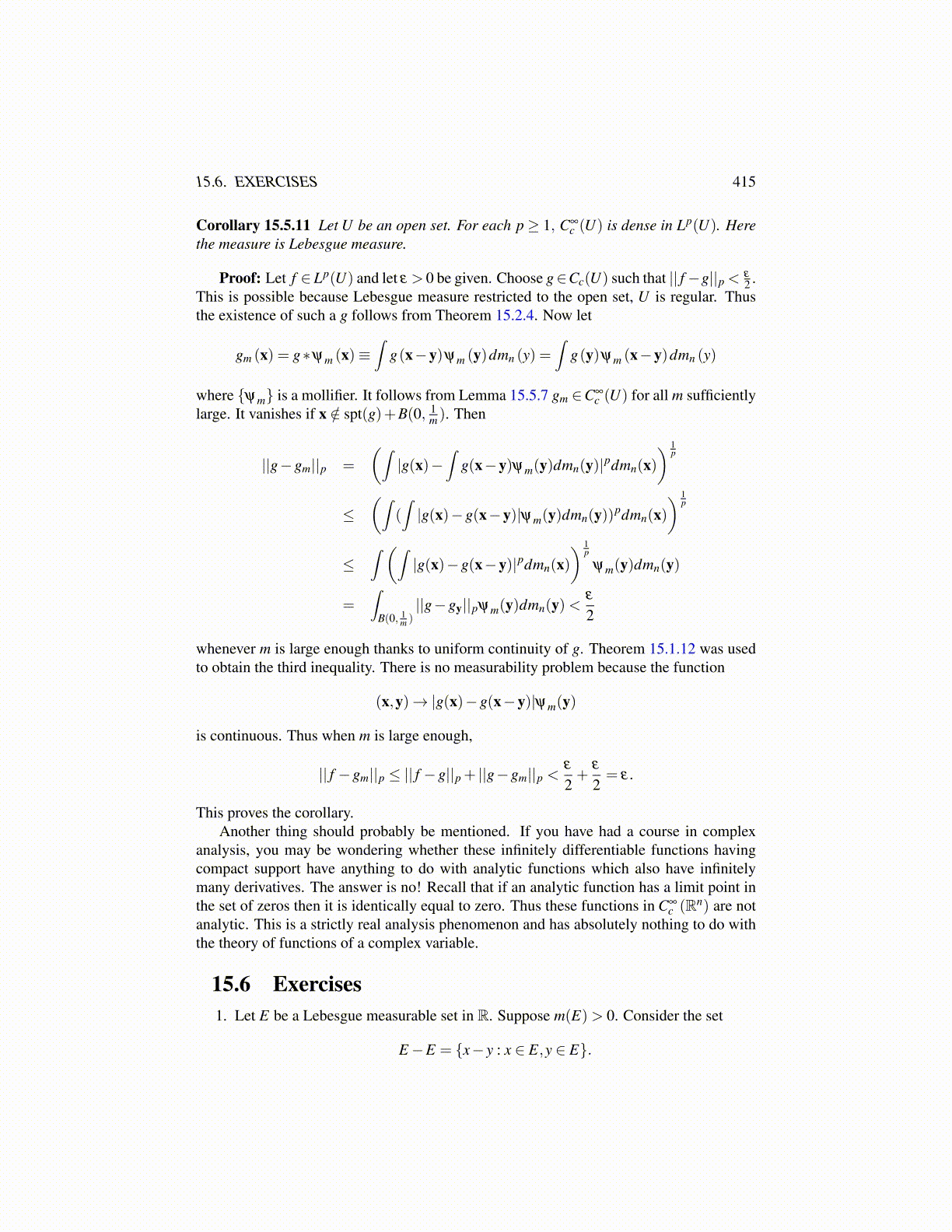
15.6. EXERCISES 415
Corollary 15.5.11 Let U be an open set. For each p≥ 1, C∞c (U) is dense in Lp(U). Here
the measure is Lebesgue measure.
Proof: Let f ∈ Lp(U) and let ε > 0 be given. Choose g∈Cc(U) such that || f −g||p < ε
2 .This is possible because Lebesgue measure restricted to the open set, U is regular. Thusthe existence of such a g follows from Theorem 15.2.4. Now let
gm (x) = g∗ψm (x)≡∫
g(x−y)ψm (y)dmn (y) =∫
g(y)ψm (x−y)dmn (y)
where {ψm} is a mollifier. It follows from Lemma 15.5.7 gm ∈C∞c (U) for all m sufficiently
large. It vanishes if x /∈ spt(g)+B(0, 1m ). Then
||g−gm||p =
(∫|g(x)−
∫g(x−y)ψm(y)dmn(y)|pdmn(x)
) 1p
≤(∫
(∫|g(x)−g(x−y)|ψm(y)dmn(y))pdmn(x)
) 1p
≤∫ (∫
|g(x)−g(x−y)|pdmn(x)) 1
p
ψm(y)dmn(y)
=∫
B(0, 1m )||g−gy||pψm(y)dmn(y)<
ε
2
whenever m is large enough thanks to uniform continuity of g. Theorem 15.1.12 was usedto obtain the third inequality. There is no measurability problem because the function
(x,y)→ |g(x)−g(x−y)|ψm(y)
is continuous. Thus when m is large enough,
|| f −gm||p ≤ || f −g||p + ||g−gm||p <ε
2+
ε
2= ε .
This proves the corollary.Another thing should probably be mentioned. If you have had a course in complex
analysis, you may be wondering whether these infinitely differentiable functions havingcompact support have anything to do with analytic functions which also have infinitelymany derivatives. The answer is no! Recall that if an analytic function has a limit point inthe set of zeros then it is identically equal to zero. Thus these functions in C∞
c (Rn) are notanalytic. This is a strictly real analysis phenomenon and has absolutely nothing to do withthe theory of functions of a complex variable.
15.6 Exercises1. Let E be a Lebesgue measurable set in R. Suppose m(E)> 0. Consider the set
E−E = {x− y : x ∈ E,y ∈ E}.